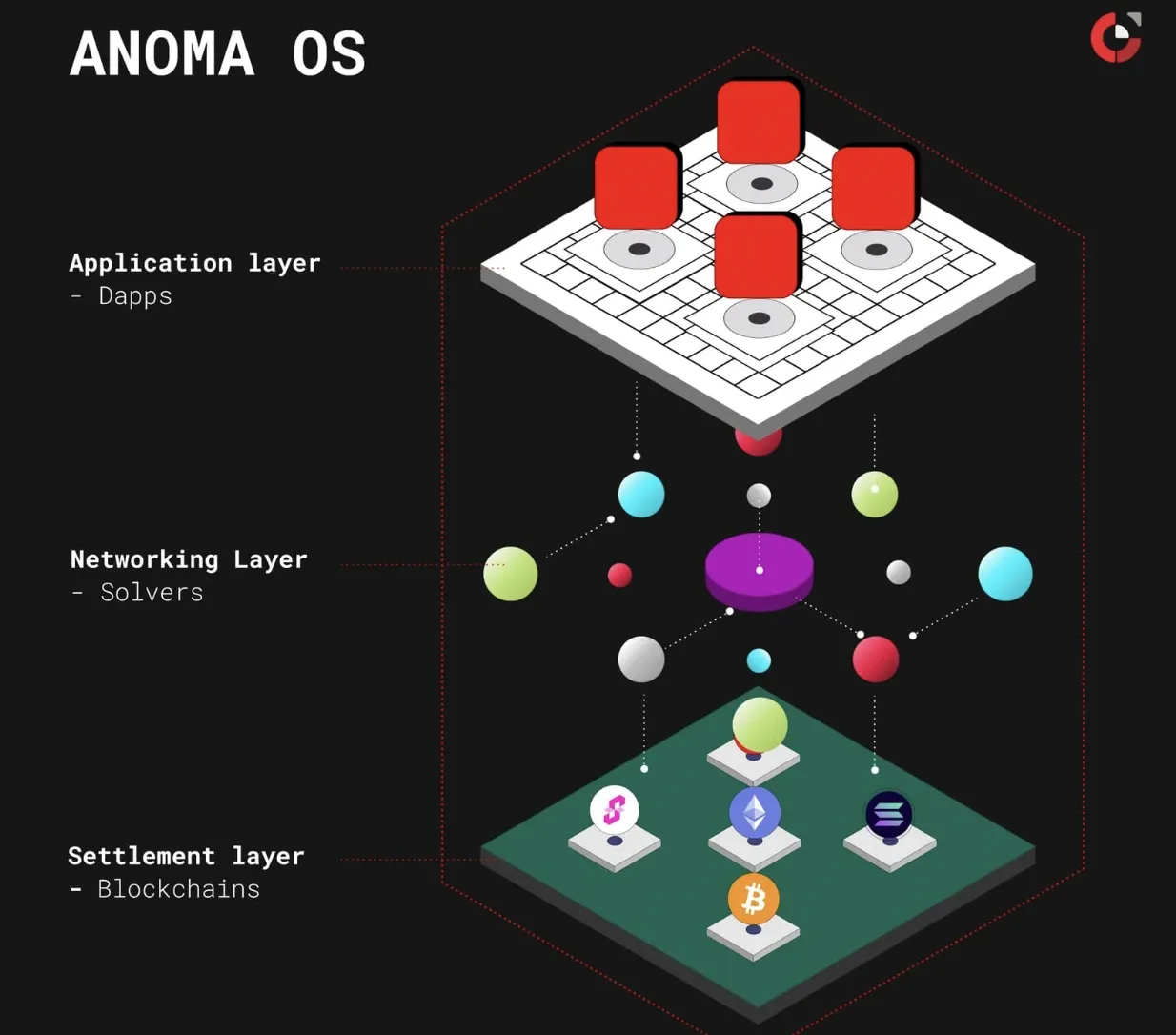Deepdive
(Advertisement)
Exploring Anoma: A Guide to Web3’s New Operating System and Its Yapper Program

Anoma introduces a new blockchain OS and Yapper rewards program focused on long-term Web3 engagement and seamless decentralized app development.
Miracle Nwokwu
July 7, 2025
(Advertisement)
Table of Contents
On June 25, 2025, Anoma launched its Yapper Leaderboard on Kaito AI, a platform designed to reward high-quality content creators in the Web3 space. This initiative reserves 1% of Anoma’s token supply for community engagement, with 0.7% allocated to top Anoma “Yappers” and 0.3% for the broader Kaito community. The program emphasizes thoughtful, long-term contributions, offering a unique opportunity for crypto enthusiasts to participate in Anoma’s vision of a unified Web3 ecosystem.
This article delves into what Anoma is, how its Yapper program works, and the technical architecture that makes it a potential cornerstone for decentralized applications.
What Is Anoma?
Anoma is a decentralized operating system designed to unify the fragmented Web3 landscape. Imagine a world where developers can build a single application that works seamlessly across multiple blockchains like Ethereum, Solana, or others, without worrying about chain-specific complexities. Anoma achieves this by introducing an intent-centric architecture, a paradigm shift that prioritizes user outcomes over technical processes. It aims to simplify the developer and user experience, making decentralized applications (dApps) as intuitive as their Web2 counterparts while maintaining full decentralization.
The Web3 ecosystem today is a maze of competing blockchains, each with its own wallets, protocols, and liquidity pools. This fragmentation forces developers to choose specific chains, risking obsolescence if user interest shifts, and burdens users with navigating multiple interfaces and transactions. Anoma addresses these challenges by creating a cohesive environment where developers can focus on building applications, and users can interact with dApps without grappling with underlying infrastructure.
The Yapper Guide: Engaging with Anoma on Kaito
The Anoma Yapper Leaderboard, launched on Kaito AI, is a community-driven program to promote meaningful discussions about Anoma’s vision. Kaito AI, a Web3-focused search platform, uses artificial intelligence to aggregate and analyze data from thousands of sources, rewarding users for sharing valuable crypto insights. Anoma’s integration with Kaito leverages this platform to foster engagement, with 1% of its token supply dedicated to rewarding participants. Of this, 0.7% goes to Anoma-specific Yappers - those creating high-quality content about the project, and 0.3% supports the wider Kaito community.
How to Participate
To become an Anoma Yapper, users need an X account and can start by visiting the leaderboard at yaps.kaito.ai/anoma. The process is straightforward:
- Authenticate Your X Account: Connect your X account to Kaito’s platform to begin earning Yap Points.
- Create Thoughtful Content: Share original, insightful posts about Anoma, ensuring to tag @anoma. Content should focus on Anoma’s intent-centric model, its role as a Web3 operating system, or its potential to unify blockchain ecosystems.
- Engage Consistently: The leaderboard prioritizes quality over quantity. Posts are evaluated based on relevance, depth, and engagement (likes, replies, shares). Long-term, consistent participation is rewarded, even for accounts with smaller followings.
- Avoid Pitfalls: Low-effort posts, spam, or AI-generated content (like repetitive phrases such as “gnoma”) are filtered out by Kaito’s AI-driven algorithm. Copying existing content or spreading misinformation will also disqualify contributions.
Rewards and Incentives
The Yapper program offers more than just token rewards. Anoma has announced a regional bonus, reserving 25% of Yapper rewards for contributors in China and Korea, encouraging global participation. Additional incentives, such as special bonuses and an exclusive Telegram chat for top Yappers, are planned for the coming weeks. These perks aim to build a dedicated community of advocates who understand and promote Anoma’s mission. The program’s focus on quality ensures that even smaller accounts can earn significant rewards by providing valuable insights.
Why It Matters
For Web3 enthusiasts, the Yapper program is an opportunity to engage with a transformative project while earning potential rewards. By participating, Yappers help spread awareness about Anoma’s intent-centric approach, which could redefine how decentralized applications are built and used. The leaderboard’s emphasis on high-quality content aligns with Kaito’s mission to combat information fragmentation in the crypto space, making it a win-win for participants and the broader ecosystem.
How Anoma Works: A Technical Overview
Anoma’s architecture is built around three core layers: the application layer, the networking layer, and the settlement layer. Together, these layers create a unified system that abstracts away the complexities of blockchain infrastructure, enabling seamless dApp development and user interaction.

The Application Layer
This layer is where developers build and users interact with applications. Unlike traditional blockchains that rely on virtual machines (VMs) and smart contracts, Anoma uses an “intent machine” (IM). The IM processes user intents—desired outcomes like swapping tokens or sharing data anonymously—into verifiable results. This declarative approach allows developers to focus on app logic rather than chain-specific code, similar to how Web2 developers use frameworks like React to simplify front-end development. For users, it means a single, intuitive interaction, regardless of the underlying blockchain.
The Networking Layer
The networking layer is a decentralized peer-to-peer network of intent gossip nodes and solvers. When a user submits an intent (e.g., “Swap 1 ETH for USDC with minimal fees”), gossip nodes broadcast it across the network. Solvers, specialized nodes, analyze these intents and execute the necessary operations, such as finding counterparties for a trade. This layer enables counterparty discovery, allowing complex, multi-party transactions to be resolved efficiently without centralized components. For example, a solver could match Alice’s intent to trade token X for Y with Bob’s intent to trade Y for X, settling the transaction across different blockchains.
The Settlement Layer
The settlement layer connects Anoma to existing blockchains, acting as the “motherboard” of the system. Intents are finalized here, with transactions settled on chains like Ethereum, Solana, or others. Anoma’s protocol adapter, already deployed on Ethereum mainnet and key L2s, ensures compatibility with major ecosystems. This layer supports atomic settlement, meaning transactions are completed in a single, secure step, reducing risks and complexity for users.
The Power of Intents
Anoma’s intent-centric model is its defining feature. Intents represent user goals, such as trading assets or booking a service, expressed in a natural, high-level way. Unlike traditional blockchains, where users must navigate multiple steps (e.g., approving transactions, selecting bridges), Anoma handles these complexities behind the scenes. Developers can build applications that process any type of intent, from financial trades to data sharing, making dApps more expressive and user-friendly. This approach mirrors how AI assistants like Siri simplify tasks, potentially onboarding millions of new users to Web3.
Anoma’s Vision for Web3
Anoma’s roadmap, which began with its first devnet in 2025, outlines a phased approach to mainnet, starting with Ethereum ecosystem support. Developers can already experiment with Anoma’s Juvix programming language, which facilitates declarative, intent-centric app development. Testnets will allow users to test dApps and provide feedback, while the mainnet will offer a stable interface for building and deploying applications. By connecting existing blockchains into a single environment, Anoma aims to eliminate the need for developers to bet on specific chains or manage multiple deployments, saving time and resources.
For users, Anoma promises a future where Web3 feels as seamless as Web2. Imagine swapping tokens across chains with a single click or sharing data anonymously without navigating complex interfaces. By prioritizing user outcomes and developer flexibility, Anoma could enable a new generation of decentralized applications, from DeFi platforms to decentralized social networks, all while preserving privacy and sovereignty.
For those eager to explore Anoma, the Yapper program provides a tangible way to contribute to Anoma’s vision while earning rewards, making it a compelling entry point into the future of decentralized applications.
Read Next...
Disclaimer
Disclaimer: The views expressed in this article do not necessarily represent the views of BSCN. The information provided in this article is for educational and entertainment purposes only and should not be construed as investment advice, or advice of any kind. BSCN assumes no responsibility for any investment decisions made based on the information provided in this article. If you believe that the article should be amended, please reach out to the BSCN team by emailing [email protected].
Author
 Miracle Nwokwu
Miracle NwokwuMiracle holds undergraduate degrees in French and Marketing Analytics and has been researching cryptocurrency and blockchain technology since 2016. He specializes in technical analysis and on-chain analytics, and has taught formal technical analysis courses. His written work has been featured across multiple crypto publications including The Capital, CryptoTVPlus, and Bitville, in addition to BSCN.
(Advertisement)
Latest News
(Advertisement)
Crypto Project & Token Reviews
Project & Token Reviews
Comprehensive reviews of crypto's most interesting projects and assets
Learn about the hottest projects & tokens














